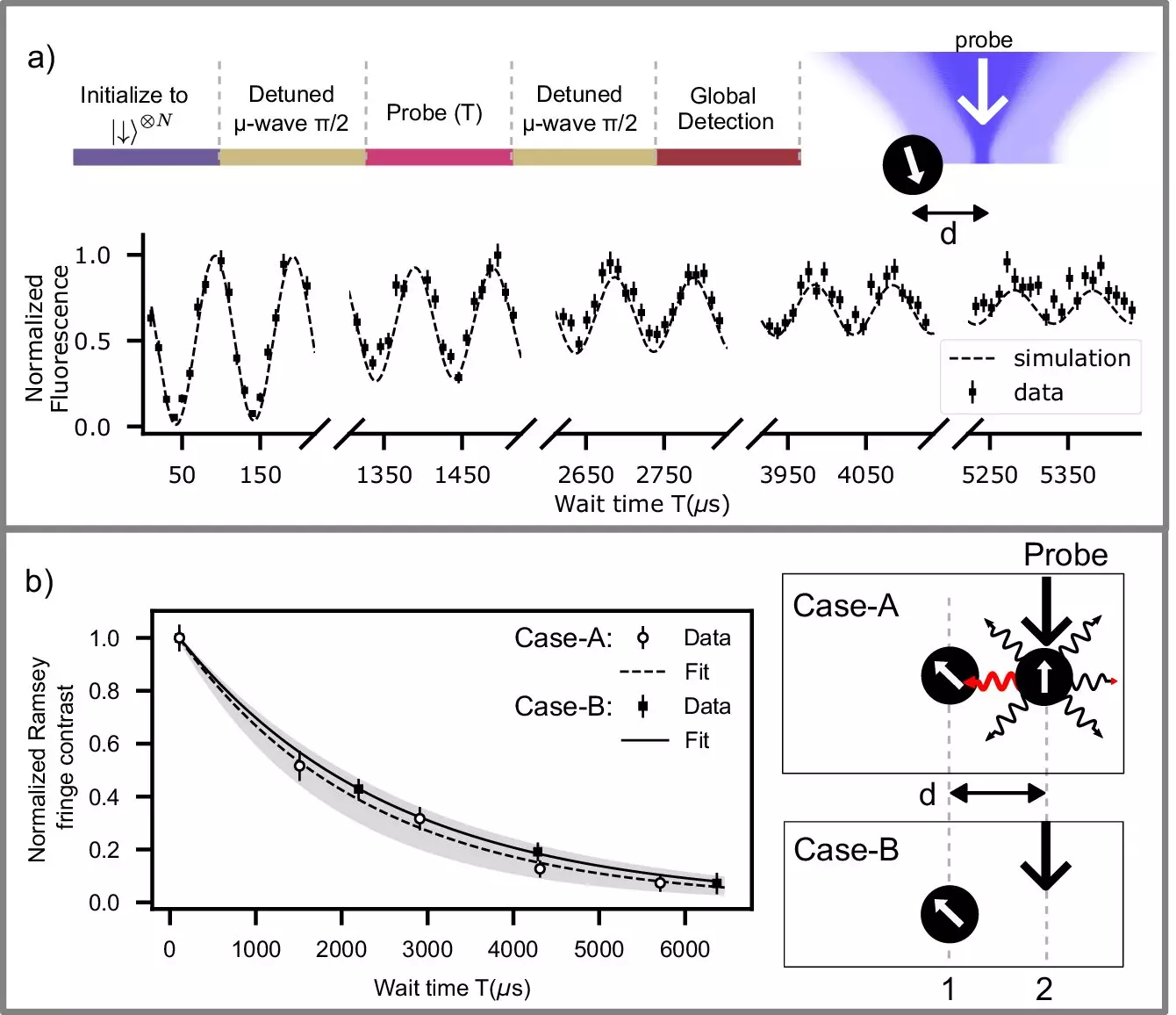Quantum information research is advancing rapidly, yet it faces significant hurdles, particularly concerning the delicacy of qubits. These quantum bits, which serve as the fundamental units of quantum computing, are susceptible to disturbances from their environment, making them difficult to protect during experiments. Maintaining the integrity of qubits during measurements, especially in tasks like quantum error correction, is critical for successful quantum operations. Conventional methods employed to shield atomic qubits often compromise coherence time, lead to additional qubit requirements, and can introduce errors, rendering them less than optimal.
Recent research from the University of Waterloo has provided a thrilling glimpse into a potential solution to these pressing challenges. This ground-breaking study illustrates how researchers developed a methodology that allows for the measurement and resetting of a trapped ion qubit—ensuring that neighboring qubits remain unaffected—even when those neighboring qubits are a mere few micrometers away, significantly smaller than the thickness of a human hair. This advancement promises to revolutionize future applications in the realm of quantum computing, including the development of more robust quantum processors and the enhancement of quantum simulation capabilities already in operation.
The research was spearheaded by Professor Rajibul Islam from the Institute for Quantum Computing, alongside contributions from postdoctoral fellow Sainath Motlakunta and members of their research group. Their findings have been formally published in the journal *Nature Communications*, illustrating a significant milestone within the field. A core element of their success stems from the ability to precisely control the laser light utilized in these operations—overcoming a daunting challenge that many in the field deemed insurmountable.
Since 2019, Islam and his team have dedicated efforts to trapping ions for quantum simulations within the Laboratory for Quantum Information. Their recent achievements represent a natural continuation of their prior work using programmable holographic technology, which was a major breakthrough reported in 2021. This study leverages an ion trap to effectively isolate and manipulate individual qubits without adversely affecting adjacent ones.
The methodology centers on the innovative integration of holographic beam shaping technology with tightly controlled laser operations in an ion trap environment. By employing these precise technologies, the researchers revealed that it is indeed feasible to obliterate a specific qubit while preserving the quantum state of neighboring qubits. According to Motlakunta, the group has made notable strides in reducing the inadvertent disturbances typically associated with qubit manipulation.
Within their framework, the process follows a strategy labeled as “mid-circuit” measurement, which presents its own unique challenges. The proximity of the qubits complicates the laser measurement process, as even minute disruptions could lead to significant errors. The researchers must ensure that the laser light directed towards the target qubit does not interfere with adjacent qubits that are only a few micrometers away, necessitating incredible precision to eliminate a range of disruptive effects known as crosstalk.
In practice, trapped ion qubits are measured using expertly calibrated laser beams tuned to specific atomic transitions. However, even with exacting control over the laser light, scattered photons emitted from the target ion during measurement pose risks; these photons might disturb the quantum states of close neighboring qubits. The research team discovered that managing these scattered photons is integral to achieving their preservation goals.
The outstanding results of this research yielded more than 99.9% fidelity in maintaining the state of an “asset” ion-qubit while resetting a neighboring “process” qubit. This also achieved over 99.6% fidelity while applying a detection beam to the neighboring qubit for 11 microseconds—the shortest measurement duration previously documented in scholarly literature. Such high levels of precision showcase the capability to achieve reliable qubit manipulation without traditional limitations.
Historically, in experiments where qubit protection is possible, researchers often resorted to moving qubits several hundreds of micrometers apart, a process that introduces unavoidable delays and increases experimental noise. Islam highlights the significance of breaking free from conventional thinking, acknowledging that the notion of destructively manipulating qubits without interfering with others might have once been viewed as impossible.
Coalescing their findings with alternative strategies—such as spatially displacing crucial qubits away from active ones or encoding quantum information in states shielded from measurement laser interference—positions the team for further exploration and refinement of their methods.
The implications of this research extend beyond mere academic curiosity; the ability to control and measure qubits with unprecedented precision has the potential to propel quantum technology into its next stage of development. As interests grow within the quantum computing field, refining techniques for quantum information protection will be pivotal in transitioning research principles to functional and scalable quantum applications. This breakthrough could indeed be a stepping stone towards overcoming one of the more complex barriers in quantum information science, paving the way for enhanced functionalities and error correction methods in future quantum computing systems.


Leave a Reply